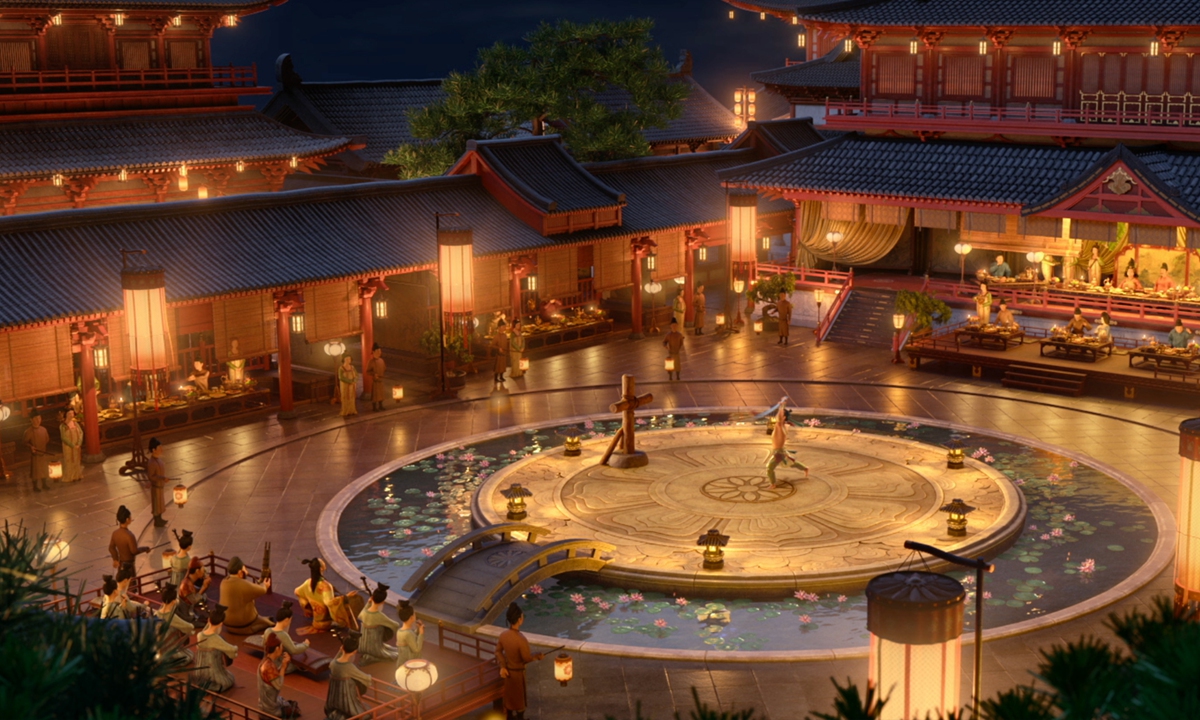
Photo: Courtesy of Light Chaser Animation Studios
When talking about the Tang Dynasty (618-907), most people will probably mention its grandeur during its peak, the An Lushan Rebellion when it started to fall, and of course one outstanding figure, Li Bai, probably the most famous Chinese poet in history.
And now, his life story is ready to hit big screens in China on Saturday in the new animated feature,
Chang'an San Wan Li, or
30,000 Miles from Chang'an.
The movie is set several years after the An Lushan Rebellion floored the empire, and the capital city of Chang'an was on the edge of falling in battle. Trapped in a hopeless battle with no place to retreat, Tang general Gao Shi chooses to tell a story to a warrior sent by emperor about his lifelong friendship with the poet Li Bai.
The film, whose English subtitles were produced by a team led by Australian sinologist Linda Jaivin, is the latest animated work from Light Chaser Animation Studios, the Chinese movie studio behind the New Gods franchise that includes
Nezha Reborn and
Yang Jian.
Based on trailers, it is clear the new film also strongly emphasizes traditional Chinese culture just like the other works from the studio.
While the film is heavily based on traditional culture, it is also a departure for the studio as it is based on an actual historical figure instead of the mythical characters in the New Gods series.
The animation team decided to start its New Culture series with Li Bai's story as the opening chapter.
"The New Culture series will be based on actual historical figures in China. This is the core of the series," one of the movie's co-directors, Zou Jing, told the Global Times.
"There is also innovation, as we are digging into the background stories of each historical figure, another side of the person that isn't commonly known by the public," Zou added.
Talking about why the studio chose to start with Li Bai, Zou explained that the Tang Dynasty holds a special position in many people's hearts.
"As one of the heydays in ancient Chinese history, we are immersed in its poetry culture from a very early age. We found ourselves speaking of one poet over all others, so we chose Li Bai."
To bring the whole movie to its climax, Zou and his co-director Xie Junwei introduce Li Bai's masterpiece of romanticism "Bring in the Wine" with an elegant and meditative reading.
Li Bai can be described with the phrase "one text, a thousand interpretations," Zou noted.
In the very beginning, the animation team came up with a middle aged man based on the description normally seen in Chinese textbooks. They later overthrew this one in the hope of presenting the audience with a more real flesh and blood figure.
"The young poet should be more carefree and unfettered. So we decided to go with that image," Xie told the Global Times.
"Li Bai was not perfect. He dreamed to achieve something but wasn't good at politics at all. He hesitated all the time, but that is more real," the co-director added.
"But overall, one can sense from this movie how resilient and romantic our nation has been. Though experiencing disturbances and depressions from time to time, our ancestors always kept their optimism and romance to the end," Xie said.
When it comes to animation style, the movie uses contrasting navy blues and yellows to create a magnificent view of the city, pushing traditional aesthetics to their limit.
URL: https://www.seeglobalnews.com/read-1822.html